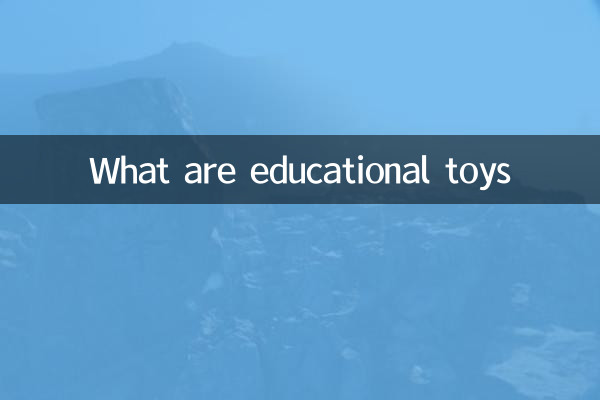What are educational toys
Educational toys are toys designed to promote children's intellectual development, cognitive abilities and hands-on abilities through games and interactions. Not only do they help children learn new knowledge, but they also stimulate creativity and problem-solving skills. In recent years, as parents pay more attention to early education, the educational toy market has grown rapidly and become one of the hot topics. The following is a summary of hot topics and hot content about educational toys across the Internet in the past 10 days.
1. Classification of educational toys

Educational toys can be divided into many types according to function and age. The following are common classifications:
| Type | Function | age appropriate |
|---|---|---|
| Puzzles | Develop spatial thinking and hand-eye coordination skills | 3 years and above |
| Building blocks | Stimulate creativity and logical thinking | 1 year old and above |
| Electronic puzzle | Combining technology and learning to improve cognitive abilities | 5 years and above |
| Scientific experiments | Cultivate scientific interest and practical ability | 6 years and above |
2. Recommendations for popular educational toys in the past 10 days
According to the search data on the entire Internet, the following are the educational toys that have attracted much attention recently:
| Toy name | Features | heat index |
|---|---|---|
| LEGO Education Sets | Combining STEAM education concepts to cultivate comprehensive abilities | ★★★★★ |
| Magnetic sheet building blocks | Enhance spatial imagination and have various ways to play | ★★★★☆ |
| Programming robots | Learn logical thinking through programming | ★★★★☆ |
| 3D puzzle | Challenge high difficulty and improve your patience and concentration | ★★★☆☆ |
3. The educational value of educational toys
Educational toys are not just entertainment tools, they play an important role in children's growth:
1.Promote cognitive development: Help children establish a basic cognitive framework through the learning of colors, shapes and numbers.
2.Develop logical thinking: Puzzle and building block toys allow children to learn to analyze and solve problems during play.
3.Enhance hands-on ability: Scientific experiments and handicraft toys can exercise children's fine motor and coordination skills.
4.inspire creativity: Open-ended play toys (such as building blocks) encourage children to use their imagination and create their own works.
4. How to choose suitable educational toys
When choosing educational toys, parents should consider their children’s age, interests and development needs:
| age stage | Recommended toy types | Things to note |
|---|---|---|
| 1-3 years old | Large building blocks and simple puzzles | Avoid small parts to prevent accidental swallowing |
| 3-6 years old | Role-playing, magnet films | Choose toys that are colorful and interactive |
| 6 years and above | Science experiment sets, programming toys | Focus on challenge and learning |
5. Future trends of educational toys
With the development of technology, educational toys are also constantly innovating. Here are possible future trends:
1.Intelligent: More toys will be combined with AR/VR technology to provide an immersive learning experience.
2.personalization: Customize toy content according to children’s learning progress and interests.
3.Environmentally friendly materials: Parents’ requirements for the safety and environmental protection of toys will drive the emergence of more green products.
Educational toys are important partners in children's growth. Choosing the right toys can provide strong support for children's development. Parents should pay attention to the educational value of toys when purchasing, not just the entertainment function.

check the details

check the details